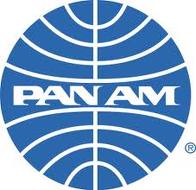The Identity Mix
Every organisation has a reputation, whether it is carefully manage, such in the case of Shell, or not, as seems to be the case with BP. This reputation is derived from the corporate personality and each personality is a function of the identity that is presented to stakeholders. From this, stakeholders create corporate reputations.
Identity is important to the creation of reputation; organisations need to understand how to
present their personality, through their identity, to their stakeholders.
Not only that, they need to ensure that stakeholder groups see an identity that is an appropriate one; one that they identify with, in a positive way. Remember, different stakeholders have different interest in an organisation and interact with different aspects of the organisation (either in a planned or unplanned way). Corporations must manage their identity so that it creates positive reinforcements with each stakeholder group. However as personality is not a fixed entity and open to interpretation, then so is identity has to be constantly refocussed. Consequentially corporations need to create strong identities that aren’t context specific.
Too confuse things further stakeholders expectations aren’t fixed, so the presentation of the corporate personality, which stakeholders identify with, needs to be organic, but based on recognisable fundamental truths. This personality must also be robust to withstand negative interference.
‘Sex, drugs and booze, don’t impress my little girls.’
Everyone has their public and private face, everybody behaves slightly differently dependent on the context that they are in. When these contexts overlap or become confused then, trouble may ensue. For instance, the language that we use in front of our parents, or children, tends to be more guarded than that with our friends or colleagues. Similarly the way that an organisation presents its personality must be harmonious with the stakeholder’s expectations and needs. Creating mixed messages or confusing target stakeholders creates a personality that is not clear cut and distinctive. A corporate personality needs to be one that is relevant to all stakeholders, but one that meets a variety of expectations.
Not enough corporations have learnt to present their personality to stakeholders in a way that will contribute to a positive reputation.
How should organisations go about presenting themselves to their stakeholders?
Birkigt and Stadler have created what they call the Identity Mix, which focuses on three key elements of the presentation of an organisation’s image.
These three elements are represented by:
- Behaviour
- Communication
- Symbolism
 These three elements are key in the way that a corporations personality is developed.
These three elements are key in the way that a corporations personality is developed.
Behaviour
The things that a corporation does, how it goes about doing business, how it develops its core competences and how it derives its competitive advantage is all part of behaviour. Sometimes behaviour as part of a business model, the way business is done, sometimes it is the way that the corporation deals with an issue or a crisis. Think about the differences between the way that Ryanair goes about doing business compared to British Airways. Or the way that Apple does compared to Dell or HP.
Communication
How organisations’ communicate is key to their personality. Virgin under Richard Branson and Ryanair under Michael O’Leary have two completely different approaches to business but they epitomise the way their organisations are perceived, and both are highly success in competitive markets.
BP and Shell communication in completely different ways. Here are the two examples of how Shell and BP present their environmental credentials.
and
Symbols
These are logos, images, catch-phrases that are representations of the corporation’s personality that stay in the memory. It may be a person, such as Steve Jobs, who represents the Apple brand or a simple symbol such as:
These symbols represent strong associates with corporations, that are intended to be positive reinforcements of each’s personality. Logos or even phrases are very powerful tools in the development of the corporate brand.
However some symbols of a corporation aren’t all positive and aren’t under their control…..
Symbols can highly effective representation of the personality of an organisation but also they can become liabilities. But it the responsibility of the corporation to ensure that such negative symbols don’t ruin their reputation. Organisations have survived major crises, such as plane crashed and been able to rehabilitate their reputation.
Communication is the key
For a corporation to successfully manage its image or identity in the minds of its various stakeholders it must manage the communications it produces and influence the communication of third parties, particularly negative ones.
The three elements can be an effective to in the management of reputation, so long as organisations are pro-active in their use and recognise communication is central to a successful Identity Mix.
_________________________________________________________________________
For more on Identity Mix see Cornelisson Chapter 4




Leave a comment